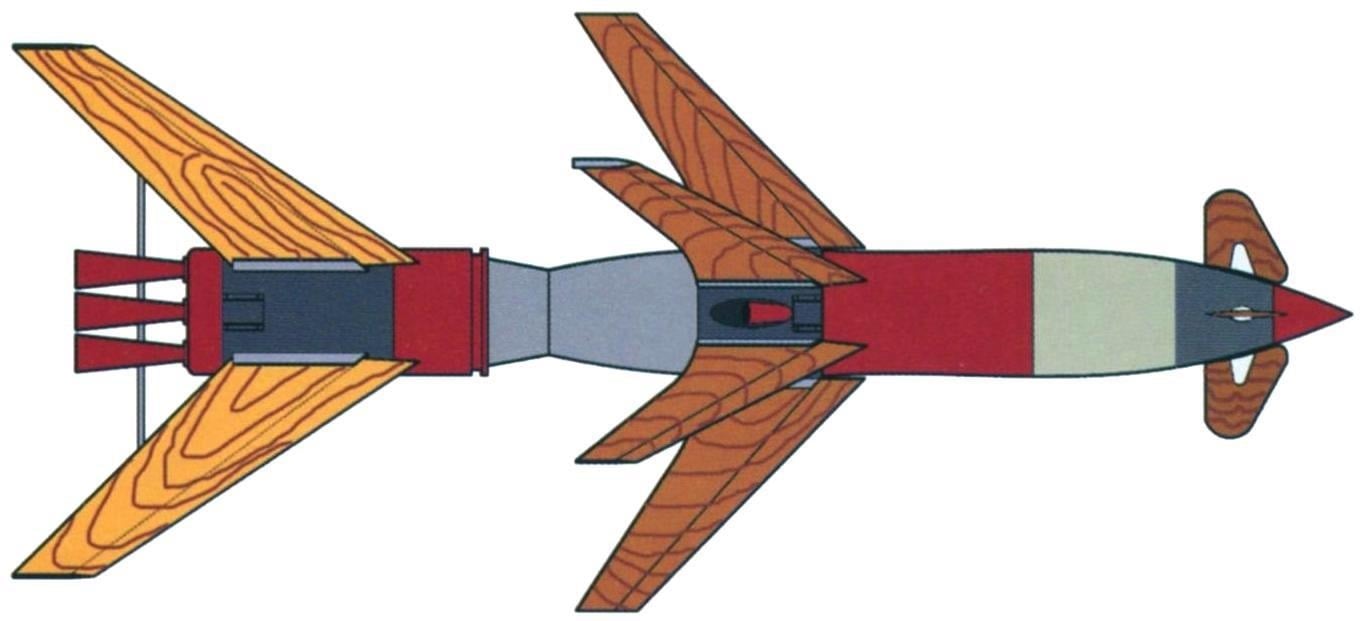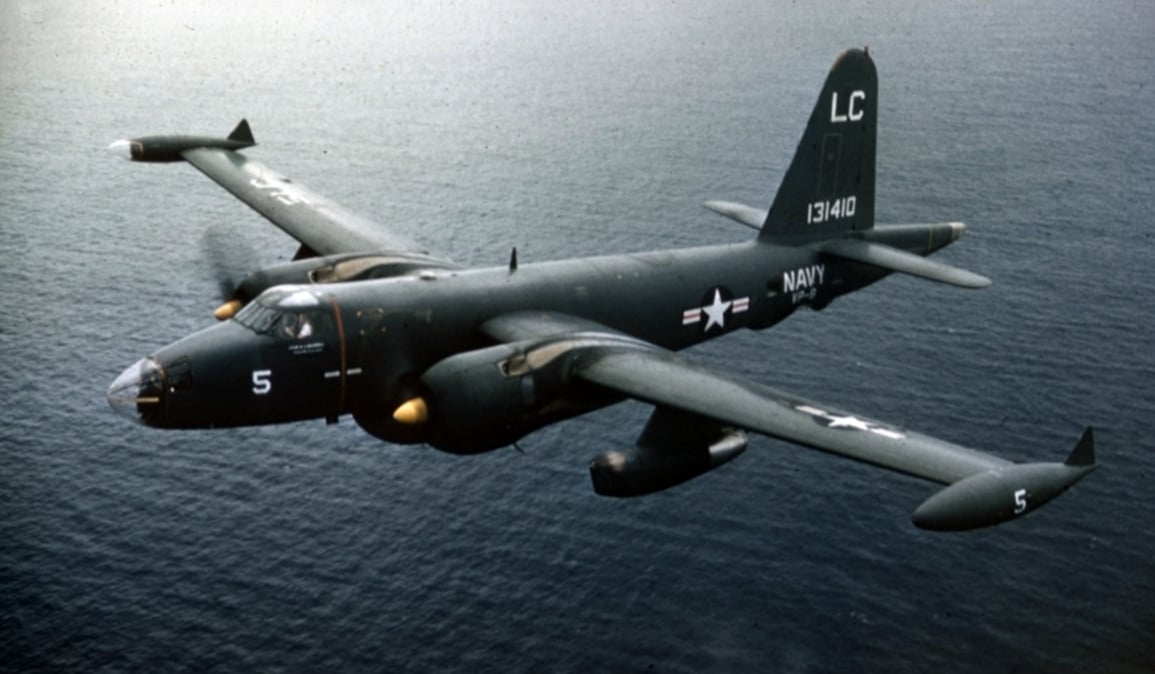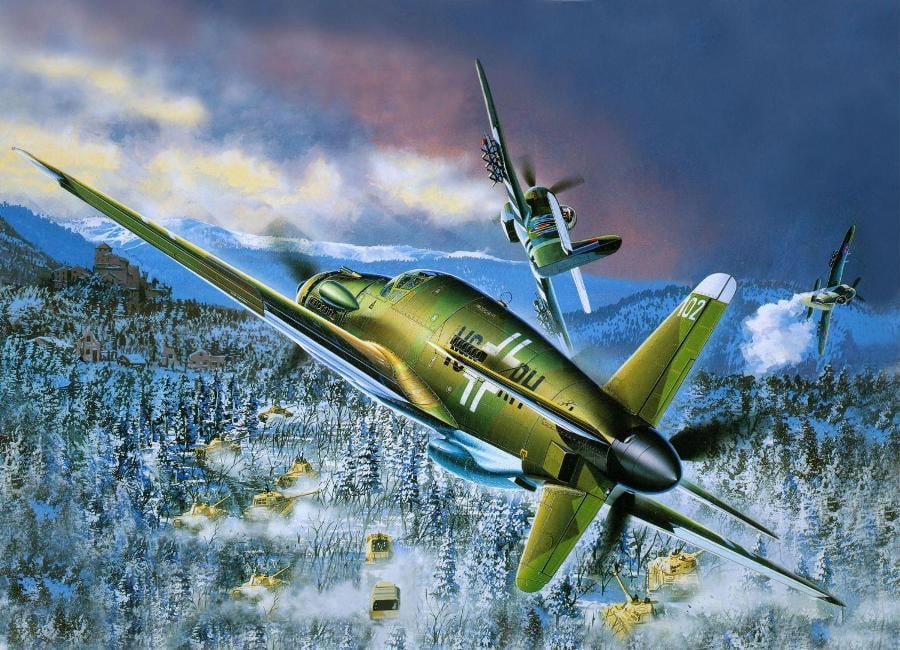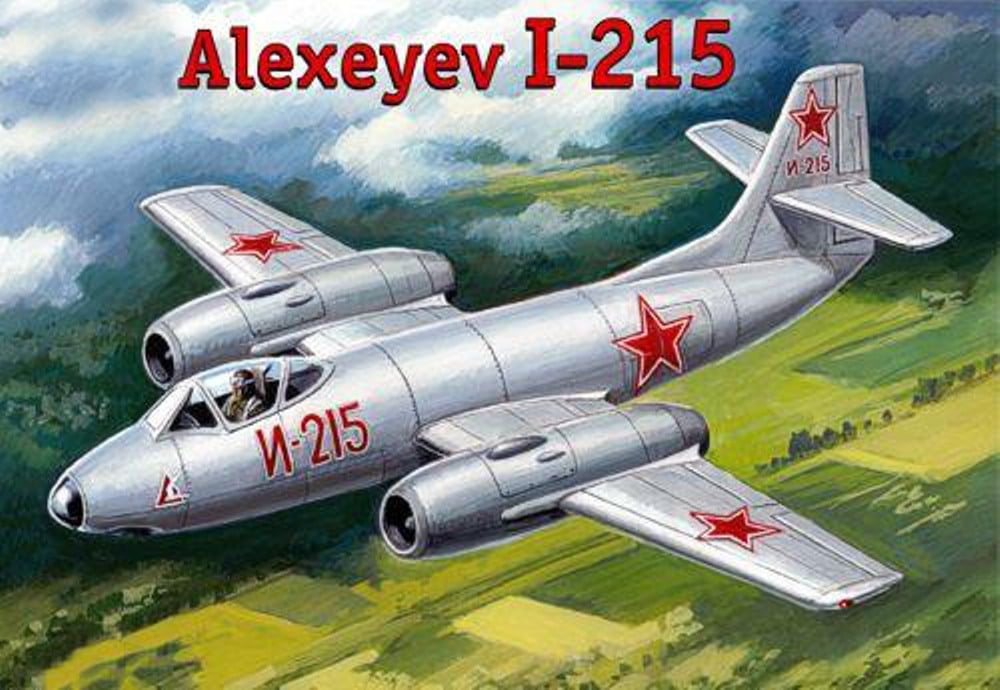 Bomber XB-70 VALKYRIE. The first jet bomber the BOEING b-47 came to the command of the U.S. air force in late 1951. However, the aircraft with maximum payload of about 10 tons could carry in their sections, not all types of bombs from the nuclear Arsenal of the United States at the time and thus became just a huge addition to the piston b-36. This circumstance was the cause of the development of the heavy bomber b-52, the first modification which was twice higher than the b-47 take-off weight in the range of about 5500 km, and, most importantly, could carry a hydrogen bomb MK.17 weighing 21 tons with a TNT equivalent of 20 megatons.
Bomber XB-70 VALKYRIE. The first jet bomber the BOEING b-47 came to the command of the U.S. air force in late 1951. However, the aircraft with maximum payload of about 10 tons could carry in their sections, not all types of bombs from the nuclear Arsenal of the United States at the time and thus became just a huge addition to the piston b-36. This circumstance was the cause of the development of the heavy bomber b-52, the first modification which was twice higher than the b-47 take-off weight in the range of about 5500 km, and, most importantly, could carry a hydrogen bomb MK.17 weighing 21 tons with a TNT equivalent of 20 megatons.
«BEETLE-42»: TRANSPORT FOR SKY AND EARTH
By experience, we know that the appearance of the “Beetle-42” delta wing aircraft evokes many emotions and, naturally, questions. Let’s set aside the emotions and focus on the most significant question: why does it have a four-wheel chassis instead of a three-wheel one? Before answering, let’s recall that ground vehicles with three-wheel chassis and front-wheel Read more…



 Anti-aircraft guided missiles (AAGM) is located at the junction of rocket technology, electronics, precision mechanics and chemistry, and are the most complex class of missile weapons. Because of this, none of them in the years of the Second world war were brought to combat use, though the development and testing of such systems was carried out in England, USA, Germany and Japan.
Anti-aircraft guided missiles (AAGM) is located at the junction of rocket technology, electronics, precision mechanics and chemistry, and are the most complex class of missile weapons. Because of this, none of them in the years of the Second world war were brought to combat use, though the development and testing of such systems was carried out in England, USA, Germany and Japan.
 Bomber P2V NEPTUN. In the late 30-ies of the leadership of the U.S. Navy began to develop the requirements for patrol aircraft anti-submarine escort convoys and deep sea exploration. New aircraft with long range flight was to carry the weapon systems of a wide range from conventional bombs to sea mines and torpedoes. To develop for this purpose flying boat did not make sense, because its pressurized fuselage are not satisfied with the capacious bomb Bay and external weapons worsens the already poor aerodynamics of a floatplane, reducing the maximum range and speed of flight.
Bomber P2V NEPTUN. In the late 30-ies of the leadership of the U.S. Navy began to develop the requirements for patrol aircraft anti-submarine escort convoys and deep sea exploration. New aircraft with long range flight was to carry the weapon systems of a wide range from conventional bombs to sea mines and torpedoes. To develop for this purpose flying boat did not make sense, because its pressurized fuselage are not satisfied with the capacious bomb Bay and external weapons worsens the already poor aerodynamics of a floatplane, reducing the maximum range and speed of flight.
 This unusual aircraft built for the Luftwaffe by the famous German firm Dornier, which had its first flight in September 1943, became the fastest piston fighter in Germany. The maximum speed that was able to develop this aircraft at an altitude of 6400 metres, made up of 763 km/h!
This unusual aircraft built for the Luftwaffe by the famous German firm Dornier, which had its first flight in September 1943, became the fastest piston fighter in Germany. The maximum speed that was able to develop this aircraft at an altitude of 6400 metres, made up of 763 km/h!
 In 1946, after about a year after relocation, the design Bureau of S. A. Lavochkin in Moscow at the plant named after Sergo Ordzhonikidze in Gorky organized the design Bureau OKB-21, this time headed by S. M. Alekseev. The first half of the design office remained a branch of OKB-301 and subordinate to the S. A. Lavochkin, and in July became fully independent. This parallel work was carried out by the Lavochkin fighters and a new project of twin-engine fighter-21.
In 1946, after about a year after relocation, the design Bureau of S. A. Lavochkin in Moscow at the plant named after Sergo Ordzhonikidze in Gorky organized the design Bureau OKB-21, this time headed by S. M. Alekseev. The first half of the design office remained a branch of OKB-301 and subordinate to the S. A. Lavochkin, and in July became fully independent. This parallel work was carried out by the Lavochkin fighters and a new project of twin-engine fighter-21.
 The starting point on the way to the first combat aircraft of OKB-115 was training bomber UT-3 (air-17, No. 17) – the first car with weapons created specifically for the military.
The starting point on the way to the first combat aircraft of OKB-115 was training bomber UT-3 (air-17, No. 17) – the first car with weapons created specifically for the military.
 Shortly after the end of the great Patriotic war in the Soviet Union began to receive numerous captured documents and samples of military equipment. Among them, in a single instance did the twin-engine multi-purpose aircraft Do 235А-1. The Bureau of new technology in TSAGI it has thoroughly studied and built technical details, which is the basis of this publication.
Shortly after the end of the great Patriotic war in the Soviet Union began to receive numerous captured documents and samples of military equipment. Among them, in a single instance did the twin-engine multi-purpose aircraft Do 235А-1. The Bureau of new technology in TSAGI it has thoroughly studied and built technical details, which is the basis of this publication.

 After the Korean war, American experts came to the conclusion that the piston attack aircraft is completely outdated. That is why the leadership of the U.S. Navy approached several companies with a proposal to design a new drum machine. An order to develop an all-weather jet carrier-based attack aircraft was issued in 1956, just a year, was declared the winner of the contest became a firm Grumman, submitting the G-128.
After the Korean war, American experts came to the conclusion that the piston attack aircraft is completely outdated. That is why the leadership of the U.S. Navy approached several companies with a proposal to design a new drum machine. An order to develop an all-weather jet carrier-based attack aircraft was issued in 1956, just a year, was declared the winner of the contest became a firm Grumman, submitting the G-128.
 Seaplane Hansa-Brandenburg W-12. The date of establishment of the naval aviation of Germany is considered to be 26 Oct 1910. On that day Admiral Alfred von Tirpitz signed a Directive on early tests of aviation equipment and aircraft, intended for use in the German Navy. And in the winter of 1911 in Putzig was established the first base of naval aviation, whose commander was appointed captain-Lieutenant max Goering.
Seaplane Hansa-Brandenburg W-12. The date of establishment of the naval aviation of Germany is considered to be 26 Oct 1910. On that day Admiral Alfred von Tirpitz signed a Directive on early tests of aviation equipment and aircraft, intended for use in the German Navy. And in the winter of 1911 in Putzig was established the first base of naval aviation, whose commander was appointed captain-Lieutenant max Goering.